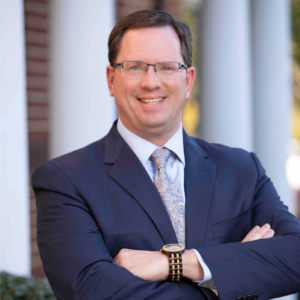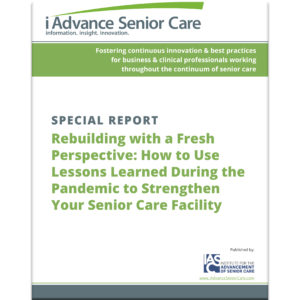A milestone year for Medicare, Medicaid, Older Americans Act, Social Security
Several major programs benefiting elder citizens of the United States are observing milestones this year. 2015 is the 50th anniversary of Medicare and Medicaid as well as the Older Americans Act, and it is the 80th anniversary of Social Security. Leaders of associations representing aging services providers recently discussed the past and present significance of these programs—and what needs to happen to ensure their future success—with Long-Term Living.
Medicare and Medicaid
President Lyndon B. Johnson formally proposed the Medicare and Medicaid programs to Congress in a special message dated Jan. 7, 1965. Noting recent accomplishments on the healthcare front, he wrote: “Our first concern must be to assure that the advance of medical knowledge leaves none behind. We can—and we must—strive now to assure the availability of and accessibility to the best health care for all Americans, regardless of age or geography or economic status.”
 The Medicare and Medicaid programs were the country’s “first attempt at, essentially, a national health insurance policy,” notes Larry Minnix, president and CEO of LeadingAge. The programs have expanded over the years—Medicare added prescription drug coverage in 2006, for instance—but through the Affordable Care Act and other means, the programs should be modernized further to include managed care and population health approaches, Minnix says. “There are things that need to be improved about them today, because they’re 50 years old,” he says. “But that’s going to be part of the fight over the next few years as to how to change them to make improvements.”
The Medicare and Medicaid programs were the country’s “first attempt at, essentially, a national health insurance policy,” notes Larry Minnix, president and CEO of LeadingAge. The programs have expanded over the years—Medicare added prescription drug coverage in 2006, for instance—but through the Affordable Care Act and other means, the programs should be modernized further to include managed care and population health approaches, Minnix says. “There are things that need to be improved about them today, because they’re 50 years old,” he says. “But that’s going to be part of the fight over the next few years as to how to change them to make improvements.”
Cost matters will figure into equations related to the future of Medicare and Medicaid. Medicare spending for its 54 million beneficiaries (including those aged at least 65 years as well as people with permanent disabilities), at $583 billion, represented 14 percent of the federal budget in 2013, and Medicaid spending represented eight percent, according to data from the Congressional Budget Offfice (CBO). Medicare also is a major payer in the healthcare system, accounting for 20 percent of total healthcare spending in the United States in 2012. And spending is expected to increase as the population ages and requires care of a higher acuity.
The elderly represented nine percent of Medicaid’s 68 million beneficiaries and accounted for 21 percent of its $397.6 billion in expenditures in fiscal year 2011, according to a report using estimates from the Kaiser Commission on Medicaid and the Uninsured and the Urban Institute.
Medicare funding currently comes from three sources: general revenues (accounting for 41 percent of funds in 2013, according to a 2014 government report), payroll tax contributions (38 percent) and beneficiary premiums (13 percent). Medicaid is funded by the federal and state governments. LeadingAge’s Pathways framework, which outlines several ways to pay for long-term services and supports, “could relieve the financial burden of Medicaid in particular, and has some unstudied implications on the use of Medicare dollars,” Minnix says. The organization has identified advocating against across-the-board cuts to Medicare as a priority for this year.
 Clif Porter, senior vice president of government relations for the American Health Care Association (AHCA), who is a former nursing home administrator, says he is “blown away” by the positive changes that have occurred during his 25 years in the industry. “Much of that has been driven by Medicare policy,” he says, listing the Centers for Medicare & Medicaid Services’ five-star ratings of nursing homes and the use of quality measures, including one reflecting a reduction in the off-label use of antipsychotic medications to treat those with dementia, as ways that the Medicare and Medicaid programs have “driven us to be better and…provided some level of focus on how to be better.”
Clif Porter, senior vice president of government relations for the American Health Care Association (AHCA), who is a former nursing home administrator, says he is “blown away” by the positive changes that have occurred during his 25 years in the industry. “Much of that has been driven by Medicare policy,” he says, listing the Centers for Medicare & Medicaid Services’ five-star ratings of nursing homes and the use of quality measures, including one reflecting a reduction in the off-label use of antipsychotic medications to treat those with dementia, as ways that the Medicare and Medicaid programs have “driven us to be better and…provided some level of focus on how to be better.”
Echoing Minnix, Porter says that the future will require different approaches to providing for elders—and he favors collaboration as a means to arrive at solutions. “While the last 50 years are important, the next 50 are more important,” he says. “I can’t underscore more the point that everyone wins when we collaborate. When we work together—advocacy groups, provider groups and the government—we can get great things done for our patients.”
Porter hopes that events associated with the White House Conference on Aging this year will offer an opportunity for interested parties to work together to find ways to improve and sustain programs serving older adults.
Older Americans Act
The OAA, enacted in 1965, is the major federal statute governing the organization and delivery of nutrition, health, social and transportation services for elderly Americans, as well as referral to home care, to enable them to age in place at home and in their communities. The law, administered at the national, state and local level, also funds services designed to prevent elder abuse and provides for caregiver assistance.
The authorization for most OAA programs expired in 2011, but the programs have continued to receive appropriations each year, including $1.9 billion in 2014, according to the CBO. Lobbying for reauthorization of the OAA is a priority for LeadingAge and its members this year. Minnix says he is confident that the act will be reauthorized at some point. “It has a lot of angel dust on it, because those programs, compared to everything else, are relatively inexpensive, and they’re popular,” he says. He adds, however, that programs need to be better funded and standardized in the way they are administered.
 The National Council on Aging asserts that “funding has not kept up with inflation or the growing population of seniors,” and Cheryl Phillips, MD, LeadingAge’s senior vice president of public policy and advocacy for LeadingAge, agrees. “I think it’s shameful that we battle over budget dust for some of these programs that are so absolutely vital, and the ultimate absurdity is that when people don't get these services, they default to more expensive nursing home care,” she says. “It’s being penny wise and pound foolish.”
The National Council on Aging asserts that “funding has not kept up with inflation or the growing population of seniors,” and Cheryl Phillips, MD, LeadingAge’s senior vice president of public policy and advocacy for LeadingAge, agrees. “I think it’s shameful that we battle over budget dust for some of these programs that are so absolutely vital, and the ultimate absurdity is that when people don't get these services, they default to more expensive nursing home care,” she says. “It’s being penny wise and pound foolish.”
AHCA also supports reauthorization of the OAA, Chair Len Russ says. “We support any programs that provide additional services to the elderly, so long as they don’t cannibalize another program.”
Social Security
Social Security, signed into law Aug. 14, 1935, by President Franklin D. Roosevelt, is the federal government’s largest single program, according to the CBO. At $840 billion, it accounted for almost one-fourth of federal spending in 2014. Of the 59 million people receiving benefits, 71 percent are retired workers or their spouses and children, and another 10 percent are survivors of deceased workers, according to estimates released Dec. 18. All of them receive their money through the Old-Age and Survivors Insurance (OASI) program, which accounts for 83 percent of Social Security outlays.
“Social Security was the first step the country took in making sure poor people—especially, at that time, women or people who didn’t have pensions—had some subsistence means, and I think those are great programs,” Minnix says. “What we have to do now is make adjustments in them to ensure their viability on out into the future.”
Currently, about 97 percent of Social Security funding is derived from payroll taxes paid by employers and employees, including the self-employed. The other three percent comes from income taxes that some recipients pay on their benefits. Tax revenues credited to the program totaled $777 billion in fiscal year 2014, but the CBO projects that, under current law, the OASI trust fund will be exhausted in 2032.
“You can do some relatively small things today to ensure the future for tomorrow,” Minnix says, “but politically, those things have been tough to do. None of the solutions is perfect, but the current situation is not sustainable long-term.”
 The solvency of Social Security is important to the future of assisted living as well, says Maribeth Bersani, senior vice president of public policy for the Assisted Living Federation of America. It’s “a main way that people can afford assisted living and many other things in their old age,” she points out.
The solvency of Social Security is important to the future of assisted living as well, says Maribeth Bersani, senior vice president of public policy for the Assisted Living Federation of America. It’s “a main way that people can afford assisted living and many other things in their old age,” she points out.
The future
 Aging services providers and their representatives, in discussing the long-term viability of these programs, will be wading into a conversation that, on one end of the political spectrum, characterizes them as unnecessary entitlements that strain the federal budget and, on the other end, sees them as deserved benefits for citizens who have paid their dues or otherwise could be vulnerable without assistance. Nobody can predict the exact ways in which these programs serving older adults will be modified in the future, but one thing is clear, AHCA’s Russ says: “We need to be very smart about how we manage these programs going forward, because I don’t think anybody, including President Johnson at the time, and all of his advisers, realized how long people were going to live going into the future, and how long people would be on Social Security and Medicare.”
Aging services providers and their representatives, in discussing the long-term viability of these programs, will be wading into a conversation that, on one end of the political spectrum, characterizes them as unnecessary entitlements that strain the federal budget and, on the other end, sees them as deserved benefits for citizens who have paid their dues or otherwise could be vulnerable without assistance. Nobody can predict the exact ways in which these programs serving older adults will be modified in the future, but one thing is clear, AHCA’s Russ says: “We need to be very smart about how we manage these programs going forward, because I don’t think anybody, including President Johnson at the time, and all of his advisers, realized how long people were going to live going into the future, and how long people would be on Social Security and Medicare.”
Related content:
Related Articles
Topics: Advocacy , Articles , Executive Leadership , Medicare/Medicaid










